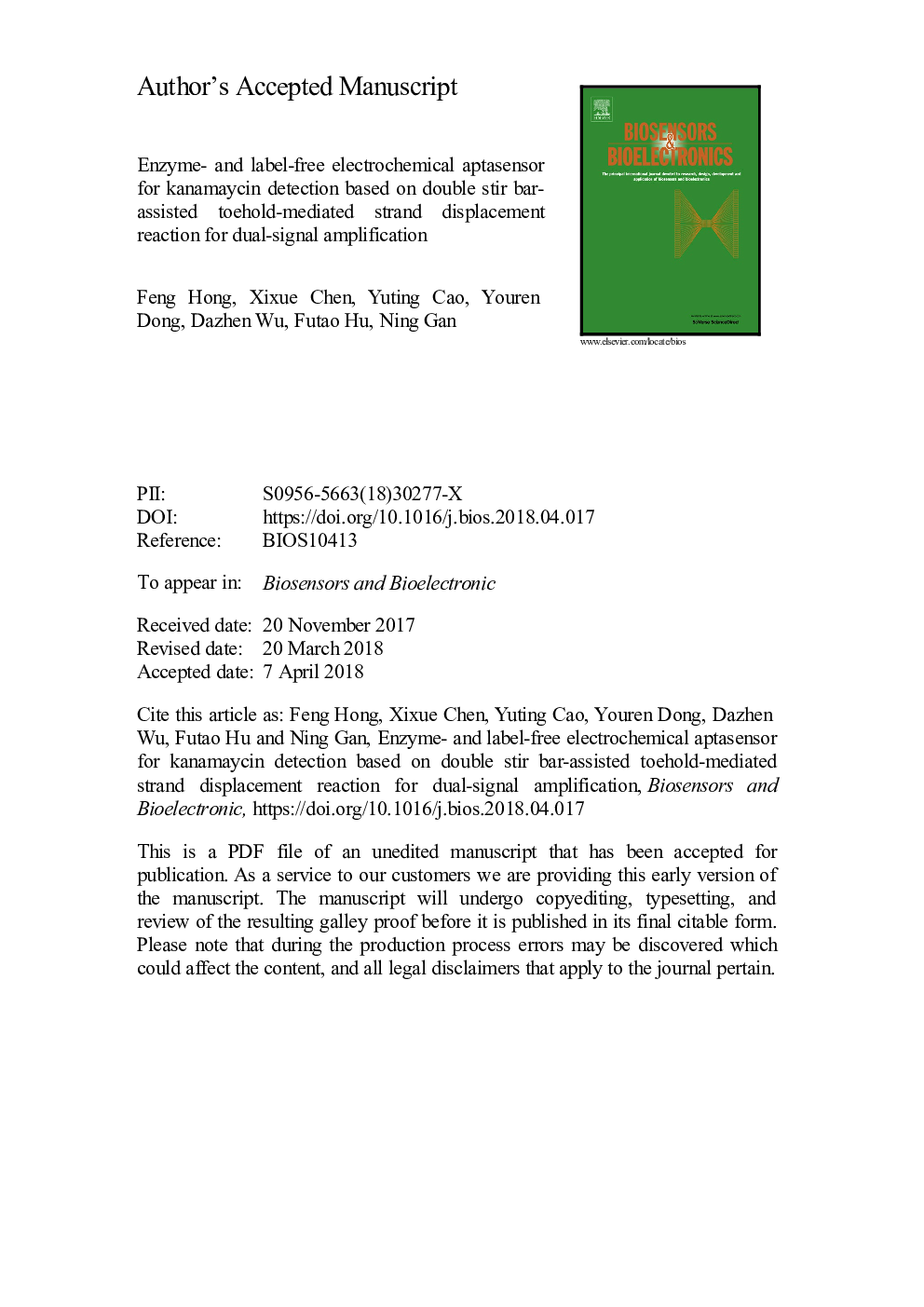| کد مقاله | کد نشریه | سال انتشار | مقاله انگلیسی | نسخه تمام متن |
|---|---|---|---|---|
| 7229300 | 1470920 | 2018 | 20 صفحه PDF | دانلود رایگان |
عنوان انگلیسی مقاله ISI
Enzyme- and label-free electrochemical aptasensor for kanamycin detection based on double stir bar-assisted toehold-mediated strand displacement reaction for dual-signal amplification
ترجمه فارسی عنوان
اپتاسنسور الکتروشیمیایی آنزیمی و بدون برچسب برای تشخیص کانامینسین براساس روش دوبار شیبدار، واکنش جابجایی رشته ای تحت حمایت قرار گرفته برای تقویت دو سیگنال
دانلود مقاله + سفارش ترجمه
دانلود مقاله ISI انگلیسی
رایگان برای ایرانیان
کلمات کلیدی
اپتاسنسور الکتروشیمیایی، واکنش جابجایی رشته ای متشکل از راننده دو طرفه، بازیافت هدف، واکنش زنجیره ای هیبریداسیون، آنتی بیوتیک ها،
موضوعات مرتبط
مهندسی و علوم پایه
شیمی
شیمی آنالیزی یا شیمی تجزیه
چکیده انگلیسی
It is critically important to detect antibiotic residues for monitoring food safety. In this study, an enzyme- and label-free electrochemical aptasensor for antibiotics, with kanamycin (Kana) as a typical analyte, was developed based on a double stir bar-assisted toehold-mediated strand displacement reaction (dSB-TMSDR) for dual-signal amplification. First, we modified two gold electrodes (E-1 and E-2) with different DNA probes (S1/S2 hybrid probe in E-1 and DNA fuel strand S3 in E-2). In the presence of Kana, an S1/S2 probe can be disassembled from E-1 to form an S2/Kana complex in supernatant. The S2/Kana could react with S3 on E-2 to form S2/S3 hybrid and release Kana through TMSDR. After then, the target recycling was triggered. Subsequently, the formed S2/S3 hybrid can also trigger a hybridization chain reaction (HCR). Consequently, the dual-signal amplification strategy was established, which resulted in many long dsDNA chains on E-2. The chains can associate with methylene blue (MB) as redox probes to produce a current response for the quantification of Kana. The assay exhibited high sensitivity and specificity with a detection limit at 16 fM Kana due to the dual-signal amplification. The double stir bars system can both increase phase separation and prevent leakage of DNA fuel to reduce background interference. Moreover, it allows flexible sequence design of the TMSDR probes. The assay was successfully employed to detect Kana residues in food and showed potential application value in food safety detection.
ناشر
Database: Elsevier - ScienceDirect (ساینس دایرکت)
Journal: Biosensors and Bioelectronics - Volume 112, 30 July 2018, Pages 202-208
Journal: Biosensors and Bioelectronics - Volume 112, 30 July 2018, Pages 202-208
نویسندگان
Feng Hong, Xixue Chen, Yuting Cao, Youren Dong, Dazhen Wu, Futao Hu, Ning Gan,
